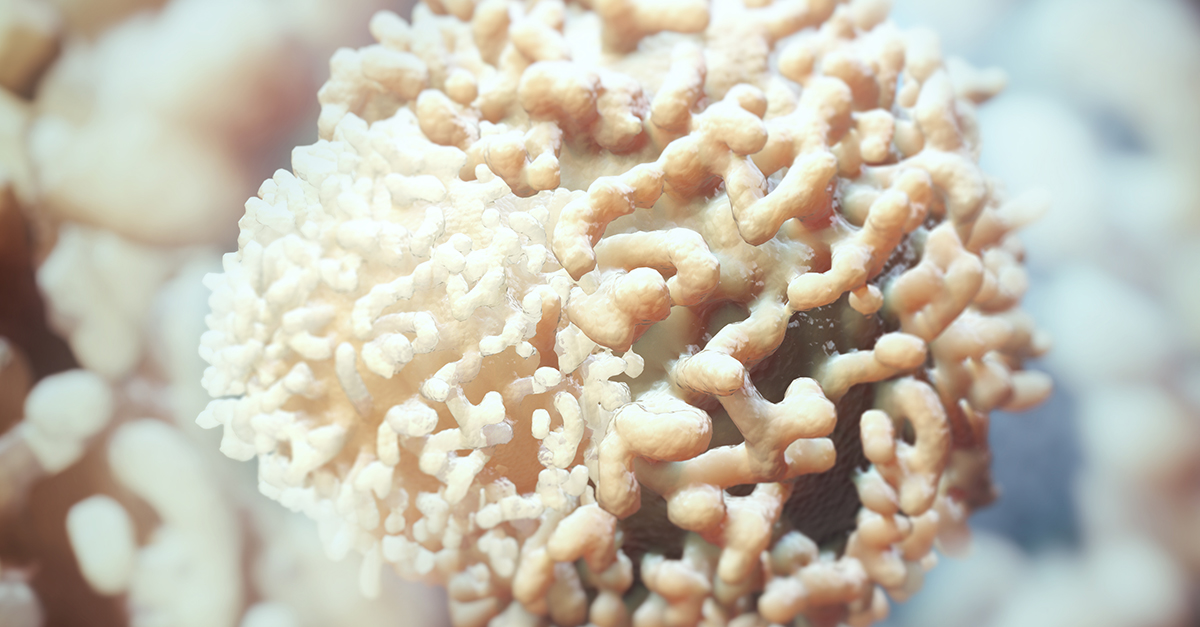
Human beings aren’t the only creatures affected by cancer. Sometimes it’s a family pet or an animal in the wild. Even clams develop cancer. Below are eight things you might not know about animals and cancer.
1. Our pets suffer from many of the same cancers that impact people.
Dogs and cats have been living with humans for centuries, sharing our homes and lifestyles—even scraps from our tables. It turns out our pets also share many of the same cancers that develop in humans, possibly because of our shared environment.
“They are mammals, and we share many organs and genomic sequences, which leads to similar cancer diagnoses,” says Arturo Loaiza-Bonilla, MD, Medical Director of Research at Cancer Treatment Centers of America® (CTCA). According to the National Cancer Institute’s (NCI’s) Comparative Oncology Program, the cancers commonly found in both pets and humans include:
- Non-Hodgkin lymphoma
- Prostate cancer
- Lung cancer
- Head and neck cancer
- Breast cancer
- Melanoma
- Soft tissue sarcoma
- Osteosarcoma
About one in four dogs will develop cancer, including half of those over 10 years old. While reliable figures are hard to come by, the NCI estimates that 6 million new cancers may be diagnosed in dogs—and a similar number in cats—every year.
2. Neutering your pet may decrease its risk of developing cancer.
A number of common cancers in pets are much less likely to develop if the pet has been spayed or neutered. Female cats and dogs that are spayed before they reach sexual maturity are at a much lower risk of developing breast cancer than unaltered females, while spaying eliminates the risk of uterine and ovarian cancer in female cats.
3. The special relationship between humans and dogs extends to cancer treatment research, where studies in one may produce treatment benefits for both.
According to the nonprofit Fetch a Cure:
- Dogs and humans are the only two species that naturally develop deadly types of prostate cancer.
- Breast cancer in dogs spreads to bones—just as it does in humans.
- The most common bone cancer in dogs (osteosarcoma) is the same cancer that affects human teenagers and young adults.
Veterinarians can use treatments approved for humans, such as chemotherapy, to care for canines with similar cancers. Dogs receive much lower doses of such drugs to reduce toxicity and potential side effects. That’s especially important, since dogs can’t tell you how a drug is affecting them.
At the same time, cancer typically progresses much more quickly in dogs than in humans. That makes it easier for scientists to study canine cancers and more quickly evaluate their response to new treatments, which may help scientists understand whether a drug may be beneficial to people.
4. Some dogs have shown the ability to sniff out cancer.
Studies have shown some dogs’ varying abilities to sniff out various cancers after getting a waft of a person’s urine, blood, breath, feces, sweat or skin. A study published in February in PLOS ONE found that dogs trained in detecting Gleason 9 prostate cancer in urine samples correctly identified the disease in 71 percent of the cancer samples and correctly ignored non-positive samples 73 percent of the time.
Still, it’s impractical for many reasons to use dogs as cancer spotters. They’re not likely to happily sit by without distraction as hundreds of urine samples pass under their noses. And they may also have a problem with incentive, since a trainer can’t reward a dog for a correct identification when they don’t know whether the dog got it right.
If they can identify the cancer-related smells dogs are reacting to, scientists do hope that “electronic noses” or “e-noses” may be developed that mechanically perform the task of tracking down those odors.
“There are a number of initiatives in development now aiming to screen for lung cancer and others by using breath analysis, which to some extent relates to an animal’s olfactory ability to detect some cancers,” Dr. Loaiza-Bonilla says.
5. Cancer has been found in animals for eons.
In August 2020, The Lancet Oncology reported a case of bone cancer. The fibula in question was about 76 million years old, according to an article in Science magazine. It belonged to a centrosaurus—a horned, plant-eating dinosaur—and was found in Dinosaur Park in Alberta, Canada. The dinosaur had an osteosarcoma, the same type of tumor that develops in human teens and young adults. The bone even looked similar to a teenage human fibula infected with the same cancer.
“Establishing links between human disease and the diseases of the past will help scientists to gain a better understanding of the evolution and genetics of various diseases,” the Royal Ontario Museum, the lead collaborator in the research, said in a press release.
You would have to go back three times as long—from the Cretaceous to the Triassic periods—to meet the stem-turtle, whose 240-million-year-old fossil, found in Germany, was discovered to have osteosarcoma in 2019, JAMA Oncology reported.
Metastatic cancer and osteomas were detected in mosasaurs (great aquatic lizards that once ruled the oceans) in 1999, and evidence of tumors were found in Cretaceous hadrosaurs (duck-billed dinosaurs) during a 2003 epidemiological investigation into dinosaur cancer, according to a 2010 article in the journal Neoplasia.
6. Some animals have cancer that’s contagious within their species.
Most of the knowledge Americans have about Tasmanian devils may be limited to the whirling Taz from Bugs Bunny cartoons. But for cancer researchers, the marsupial breed has attracted attention for a facial cancer that’s contagious to other Tasmanian devils, spread when they bite the face of an infected devil.
Contagious cancer is rare. Dogs also develop such a disease, a sexually transmitted cancer called canine transmissible venereal tumor (CTVT), which acts more like a parasite and usually can be treated with surgery, radiation therapy and/or chemotherapy.
Contagious neoplasia, similar to human leukemia, has been found in clams, mussels, oysters and other bivalve mollusks. It’s likely spread in seawater filtered from one clam to another.
7. How an animal ages may affect its susceptibility to cancer.
Elephants and whales often grow old in the wild, a process many other species don’t experience. Elephants also increase their reproductive potential as they age, raising the possibility that evolution has allowed their cancer resistance to persist as they age, according to an article in the Biological Review.
By contrast, mammals with the highest rates of cancer—including dogs, cats and humans—are able to live longer, not solely because of evolutionary changes but also because their controlled environments better protect them from predators.
8. Elephants and whales, among the largest mammals, have been diagnosed with relatively few cancers.
An elephant rarely forgets—and it almost never gets cancer, either. The same is true for whales.
What do elephants have that humans don’t? A lot more copies of a tumor-suppressing gene, for one thing. Humans have one copy of the tumor protein 53 (TP53) gene, while elephants have 20 copies, an evolutional factor that may allow them to fend off more cancerous mutations than humans. TP53 gene mutations are among the most common in human cancers.
Whales, some of which can live for more than 200 years, have genetic alterations that have evolved at a faster rate than other mammals. These genes improve the way whales manage their healthy cells, including in-cell DNA repair, proliferation, and cell-cycle and metabolic regulation, according to a May 2019 article in Medical News Today. The research also indicates whales have multiple copies of tumor-suppressing genes and appear to have a slower mutation rate than other mammals.
Elephants and whales, among the largest and longest-living mammals on Earth, are prime examples of Peto’s Paradox. Since cancer is linked to cell mutations, it seemed logical to epidemiologist and statistician Sir Richard Peto that the more cells an animal has, the greater its chances of developing mutations, and cancer. He also considered a similar relationship between aging and cancer, since the longer a creature is alive, the more its body replicates cells. With all that cell division and replication, mistakes are bound to happen.
But Peto later found that a species’ rate of cancer does not correlate to the number of cells it has or how long it lives. Humans, for example, have 1,000 times more cells and live 30 times longer than mice, but the two species face similar chances of developing cancer.
Elephants and whales aren’t the only species that rarely develop cancer. Others include horses, cows, bats, blind mole rats and naked mole rats.
“From these examples, it’s becoming clear that the secret of cancer resistance lies in how the genome is maintained,” a December 2018 article published by the nonprofit Genetic Literacy Project said. “These species have ways to either prevent accumulation of mutations, prevent mutations from occurring in the first place, or restrict cancerous growth, all of which seem to be under a higher level of control than humans.”
Learn about research into dormant cancer cells and why they awaken.



